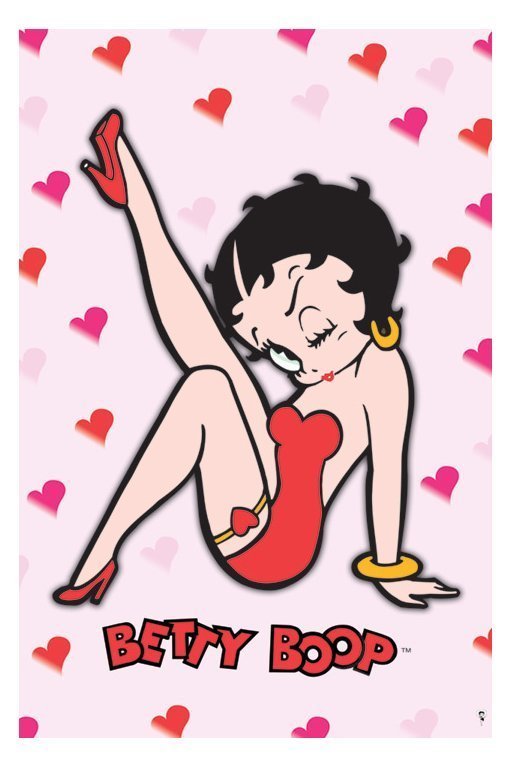
Helen Kane in a 1931 comedy called “A Lesson in Love.” ( Source) At the time, Baltimore newspaper The Afro-American reported that Jones was believed to be “the highest paid child artist in the world.” Helen Kane Swipes Jones’ Scatting Style With her parents and manager in tow, Esther Jones continued to travel and perform in major cities in the U.S., attracting a growing number of fans wherever she went. She was called “Little Esther”, “Farina’s Kid Sister,” and “Miniature Florence Mills,” which referenced other Black performers of the era. Jones was known by many stage names before she gained her famous “Baby Esther” moniker. Jones is believed to be the first singer to incorporate boop-oop-a-doop scatting, though that notion is fraught with a controversial history. This baby-voice scatting style dazzled Jazz Age audiences and gained Jones critical acclaim virtually wherever she performed. Esther Jones’ “Boop-Oop-A-Doop” Singing StyleĪt an early point in her career, child star Esther Jones introduced a “boop-oop-a-doop” singing style into her performances. Her effortless charm and consistent big smile entertained audiences who could treat her like a delightful novelty that presented no threat to the white supremacist society they benefitted from. And she was a massive hit with white audiences.

This was the deeply racist society that a young Black performer like Esther Jones had to work with. Mob lynchings continued to terrorize people of color and the justice system sought to serve whites at the expense of Black lives. The KKK experienced a resurgence in national membership and an outpouring of support from elected officials. In the years that Esther Jones was active in show business, Jim Crow laws infiltrated all parts of American society. In most venues that Jones attended, Black people were not allowed to enter the buildings unless they were there to entertain. She danced and sang songs, occasionally performing in racist minstrel shows alongside white men in blackface to the delight of crowds. Jones became a big hit with white audiences, who were enraptured by her childlike charm and impressive singing ability. Esther Jones began performing in mostly whites-only clubs throughout Chicago, New York, and other major cities in the Northeast. ( Source)Īfter the win, Bolton offered to represent Jones as her talent agent, and her parents agreed. Esther won first prize and attracted the attention of a white talent manager named Lou Bolton.Įsther Jones appears in a minstrel show with a white performer in blackface in 1929. When she was around 5 years old, she competed in a Charleston dance competition in Chicago. Her parents encouraged and involved Esther in singing and dancing competitions as a small child. From an early age, Esther showed a natural talent for performing. Esther Jones’ Early CareerĮsther Lee Jones was born in Chicago somewhere between 19 to Gertrude and William Jones. This is the story of Betty Boop’s original influence, and star in her own right, the incredible Esther Jones. But as a Black child in Jim Crow-era America, Jones’ legacy was quickly forced into obscurity, lost to a white singer who copied her performing style, claimed it as her own, and sued over the creation of a famous cartoon character that followed soon after. “Baby Esther” Jones was an international star from Chicago known for captivating audiences with her signature “boop-oop-a-doop” singing style. ~ By Shari Rose Updated NovemEsther Jones, Original Boop-Oop-A-Doop Scatting Icon from the 1920s Esther had passed away in 1934, so this was the only form of evidence that they could provide.A 1931 poster highlighting Esther Jones and her upcoming performances at the El Dorado theater in Brazil. The defense managed to find a 1928 sound film of Baby Esther’s performance, and played it for the judge. Walton revealed that Kane had attended Baby Esther’s act in April of 1928, and began “booping” just like Esther a few weeks after the show.

The original betty boop trial#
The trial went on for two years until the defense called Baby Esther’s manager, Lou Walton, to testify.

While Betty was visually a caricature of Kane, her famous “booping” was the appropriation of Baby Esther’s signature scat, which she performed at the Cotton Club in Harlem throughout the 1920s. Kane believed that the character was based on much more than just her looks, and claimed that it was based on her entire persona- she insisted that she had invented the phrase “Boop-oop-a-doop” in her well known 1928 hit song, “I Wanna Be Loved By You.” As a result, Kane filed a $250,0000 infringement lawsuit against Fleischer and the film company Paramount Publix Corp.

The visual inspiration behind Betty Boop, a Max Fleischer Studios creation, was actually a popular white actress and singer named Helen Kane.


 0 kommentar(er)
0 kommentar(er)
